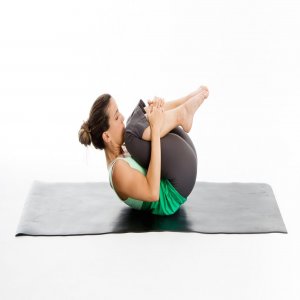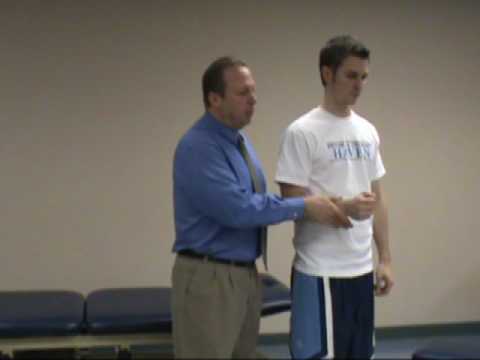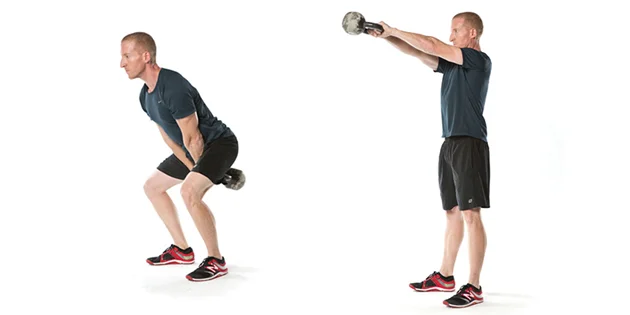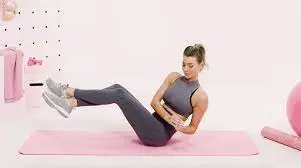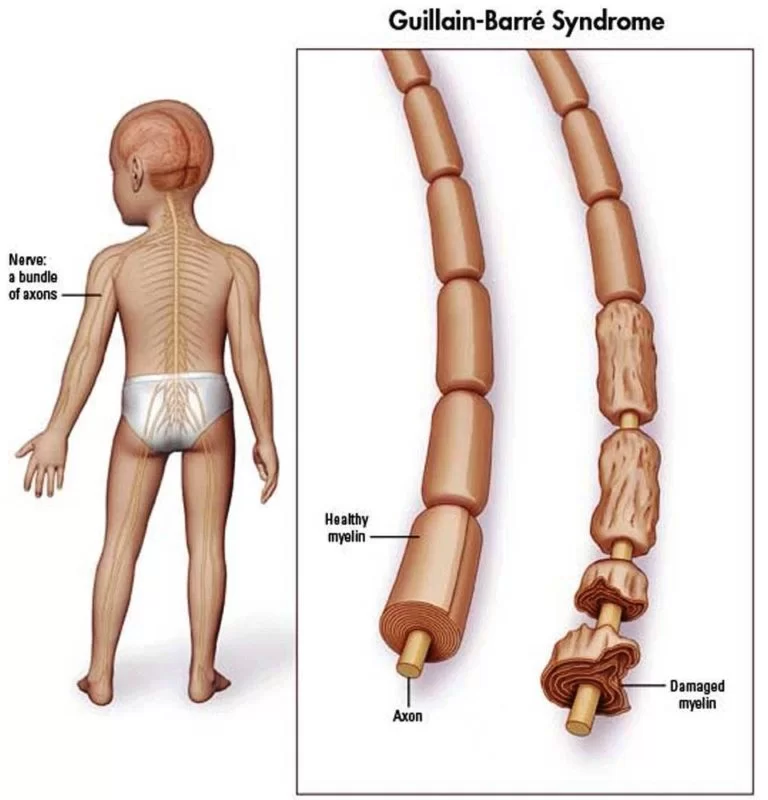26 Best Back muscle stretching exercise
Back muscle stretching exercise is an important exercise to improve flexibility and posture of the Back, If you are performing this exercise, they have many health benefits and reduce the risk of Back pain, and improves your overall fitness level.
What is Back muscle stretch?
The spine is a complex structure made up of muscles, ligaments, tendons, and bones. It’s planned to move side-to-side and front-to-back, as well as carry the volume of the body’s weight. That’s why it’s so essential to keep all its parts in good working order.
Daily stretching exercises help keep muscles and ligaments flexible. They can also lower stress on joints and increase the flow of blood and nutrients throughout the body. Without it, stiffness, limitation of motion, and pain can occur or rise.
Stretching is also an essential way to prepare the muscles for vigorous activities such as aerobics or playing a sport. That is why stretching exercises should also be done before and after a workout to avoid muscle strain and soreness and to help prevent injuries.
Lower back pain is a fairly common health problem, as so many things can cause it.
While stretching isn’t a cure for all lower back pain, in many instances, it can give relief. If you’ve been living with some kind of discomfort or stiffness, these stretches may help decrease the pain and strengthen the muscles in your lower back.
You need to use your lower back for a lot of things, from walking and running to simply getting out of bed in the morning. Regular stretching is the best way to create and keep flexibility, relieve tension, and help build strength.
What are the Benefits of doing back muscle stretch?
There are some benefits you can gain after stretching back muscles. Such as :
- Stretching can improve posture-Tight muscles can cause bad posture. Specifically, the muscles of the chest, back (both lower and upper), and hips can cause bad posture if they are tight. Many people spend at least a part of their day sitting at a computer or looking at a phone or tablet. We can improve this bad posture to a good one by stretching the back muscles.
- Stretching can increase the range of motion and prevents loss of range of motion.
- Stretching can reduce low back pain.
- Lowering the risk of disability caused by back pain.
- Stretching can help avoid injury -Stretching before physical training specifically helps prevent injury by moving blood flow to the muscles, warming them up, and reducing any tightness they might have to prevent a strain or a tear.
- Stretching can reduce muscle soreness.
- Stretching can improve flexibility and mobility.
- Reduces muscle tightness.
What are the types of lower back stretching?
There are different types of stretches for lower back muscles. Some are below:
- Child’s Pose
- Knee-to-chest stretch
- Piriformis stretch
- Seated spinal twist
- Pelvic tilt
- Cat-Cow pose
- Sphinx/cobra stretch
- Trunk rotation
- Seat forward bend
- Flexion rotation
- Supported bridge
- Belly flops
- Hip circles
- Reclining single-leg stretch
- Legs-Up-the-Wall
- Thread the Needle
- Latissimus dorsi stretch
- Bridge
- Foam rolling
- Back extension
- Weighted hamstring stretch
- Standing chest stretch
- Seated spinal stretch
- Bird-Dog pose
- Poodle tail lower back stretch
- Open Book Stretch
Child’s Pose

How to do: With your hands and knees on the floor, drawback through your hips to rest them on your heels.
Hinge at your hips as you flex forward, moving your hands out in front of you.
Place your belly on your thighs.
Stretch your arms in front of or alongside your body with your palms facing the roof.
Concentrate on breathing deeply and relaxing any parts of tension or tightness.
Hold this pose for up to 60 seconds.
You can perform this pose several times during your stretching routine. Feel free to perform it between each of the other stretches you do.
If you need extra support, you can use a towel underneath your thighs.
Knee-to-chest stretch
How to do: Lie in a supine position with both knees bent and your feet flat on the ground.
Keep your right knee bent or extend it straight out along the ground.
Draw your left knee into your chest, clasping your hand’s bach side your thigh or at the upper part of your shinbone.
Elongate your spine down to your tailbone, and avoid raising your hips.
Breathe deeply, relieving any tension.
Hold this pose for 30 seconds to 60 seconds.
Repeat with the right leg.
you can wrap a towel under your thigh if your hands can’t reach your thigh.
To feel a deep stretch, tuck your chin into your chest and raise your head toward your knee.
Piriformis stretch
How to do: Lie in a supine position with both knees bent and your feet flat on the mat.
Place your left ankle at the base of your right thigh.
Then, place your hands behind your right thigh and pull up toward your head until you feel a stretch.
Hold this position for 30 seconds to 60 seconds.
Then perform the opposite side.
Seated spinal twist
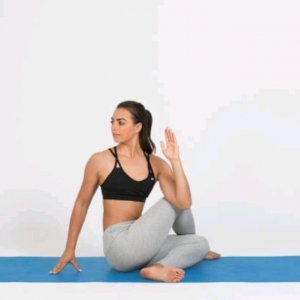
How to do: Sit on the mat with both legs stretched out in front.
Bend your right knee and place your foot on the outside of your left thigh.
Place your left arm on the outside of your right thigh.
Place your right hand behind you for support.
Starting at the bottom of your spine, twist to the right side.
Hold this pose for up to 60 seconds.
To feel an extra stretch, add in neck rotations during this pose by inhaling to look forward when you inhale and exhaling to turn your gaze backward when you exhale.
Perform 5 to 10 on each side.
Pelvic tilt
How to do: Lie in a supine position with both knees bent and feet flat on the mat.
Engage your abdominal muscles as you compress your back against the mat.
Breathe normally, pause this position for up to 8-10 seconds.
Release and take a deep breath to relax.
Perform 2 to 3 sets of 3 to 5 repetitions.
Cat-Cow pose
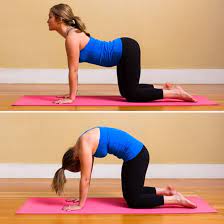
How to do: Move onto all fours in a tabletop position (hands and knees on the floor).
Compress into your hands and feet as you inhale to look upward, and let your belly fill with air.
Exhale, tucking your chin into the chest and arching your spine toward the roof.
Continue this pattern of motion, moving with each breath.
Perform this for 1 to 2 minutes.
For deeper holds, simply pause in each position for 5 to 20 seconds at a time instead of changing with each breath.
Sphinx/cobra stretch

How to do: Lie in a prone position with your elbows underneath your shoulders and your hands elongated in front, palms facing downward.
Place your feet slightly apart. It’s OK for the big toes to touch.
Gently engage your lower back, thighs, and buttocks as you raise your head and chest.
Press your pelvis into the ground.
Look straight ahead or slowly close your eyes.
Hold this pose for 30 seconds to 60 seconds.
Trunk rotation
How to do: Lie in a supine position and draw your knees up toward your chest so your body is placed as if you’re sitting in a chair.
Completely extend your arms out to the sides, with your palms face-down on the ground.
Keeping your knees together and hands on the ground, gently turn both bent knees over to your left side and hold for 10–20 seconds.
Return to the beginning position and repeat to move on your right side, again holding for 10–20 seconds.
Repeat 8–10 times on each side.
Seat forward bend
How to do: Sit on the ground with your legs extended out in front of you.
Hook a standard bath towel around the ends of your feet at the heels.
Slowly bend forward at your hips, moving your belly down to your thighs.
Maintaining your back straight, grasp the towel to help you draw your belly closer to your legs.
Stretch until you feel the tension in the back of your legs and lower back.
Hold for 15-30 seconds, rest for 15-30 seconds, and repeat 2-3 times.
You can increase or decrease the tension of this stretch by grasping the towel closer or farther from your feet.
Flexion rotation
How to do: Lie on your left side with both legs straight.
Bend your right leg, hooking your foot behind your left knee.
Grasp your right knee with your left arm.
Place your right hand behind your neck.
Gently rotate your upper body backward by touching your right shoulder blade to the ground. You should feel a
stretch in your lower back.
Repeat the rotation stretch 8-10 times,
Hold each stretch for 2–3 seconds before gently moving out of the rotation.
Repeat steps 2–6 on your right side.
Supported bridge
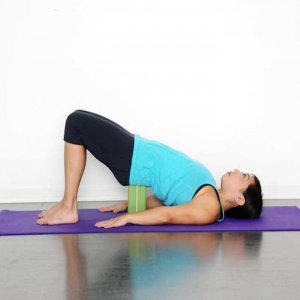
How to do: Lie in a supine position with your knees bent and feet flat on the ground.
Raise your hips and put a foam roller or firm cushion underneath them.
Fully relax your body into the support of the ground and the foam roller or firm cushion.
Hold for 40–60 seconds and repeat 4–5 times, resting 40–60 seconds between sets.
You can increase the intensity of the stretch in your lower back by extending one or both legs from their bent position.
Belly flops
How to do: Roll up a towel or blanket lengthwise and put it horizontally in front of you.
Recline front-side down over the towel or blanket so that your hip bones are compressing into it.
Fully relax your body. You can turn the head to either side.
Pause in this position for 1–2 minutes and repeat 2–3 times, resting 40–60 seconds between sets.
Hip circles
How to do: Stand with your feet wider than the hips and both hands on your hips.
Begin by gently moving your hips from side to side.
Then gently rotate your hips in one direction, making big circles.
Perform at least 10 circles.
Repeat in the other direction.
Reclining single-leg stretch
How to do: Lie in a supine position with both legs extended.
Lift your left leg so it’s as straight as possible, keeping a slight flex in the knee.
You can bend your right knee and press into the foot for support.
Lock your fingers to hold your leg behind your thigh, or use a towel around the top of your foot.
Hold this single-leg stretch for 30 seconds.
Repeat on the right side.
perform 2 to 3 times on each side.
Legs-Up-the-Wall
How to do: Come into a sitting position with the left side of your body against a wall.
Lie in a supine position and swing your legs upward along the wall. You may put a cushion under your hips or Draw your hips a few inches from the wall.
Rest your arms in a comfortable position.
Concentrate on relaxing the lower back and releasing tension.
Pause in this pose for up to 2 minutes.
Thread the Needle
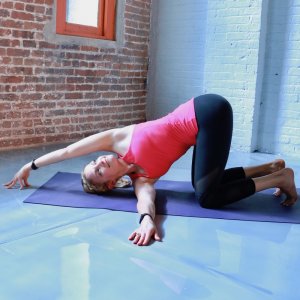
How to do: Begin on hands and knees, with the knees directly underneath the hips and the feet in line with the knees.
Keeping the hips, knees, and feet stable, move the hands out in front until they are under the shoulders.
Keep the arms extended so that a mild stretch is felt down the sides.
Take the left arm and pass it under the right arm while rotating the chest.
The left hand should rest on the ground, palm up.
Try to lower the left shoulder as far as possible, while gently placing the left side of the head onto the floor. Look past the armpit, toward the roof.
Hold this pose for 20–30 seconds.
Push upward, using the left arm to gently return to the starting position. Then, repeat the stretch using the right arm.
Latissimus dorsi stretch

How to do: You can do it in a standing or sitting position, raise the left hand straight up, over the head.
Flex the elbow, so that the left-hand drops toward the upper back.
Place the right hand on the left elbow and gently pull the left arm to the right.
While pulling the left elbow, bend the body in a straight line to the right, and assure not to lean forward or backward.
Hold this stretch for 15–30 seconds, then do it on the other side.
Bridge

How to do: Lie in a supine position with the knees bent.
The feet should rest flat on the ground, pulled in as close as possible to the hips, and the arms should be your either side.
Squeezing the buttocks, lift the pelvis toward the ceiling, while rolling the upper body upward until the back is off the floor.
The shoulders are now balancing the body’s weight.
Hold this bridging position for 5-7 seconds and continue to concentrate on squeezing the buttocks.
Gently lower the upper body, slowly letting each vertebra touch the ground until the backrests are flat again.
Repeat 10-12 times per set, and gradually increase up to 3 sets.
Foam rolling
How to do: Place the roller on the ground.
Sit on the ground in front of the roller and lie back onto it, keeping your feet flat on the ground.
Slowly roll forward and back, slow down or stop if you feel pain. Mild pain is ok in the tender area.
If possible, take a sit in front of the roller and arch the back over the roller as far as is comfortable.
Hold for 10-15 seconds.
Back extension
How to do: Lie in a prone position with your hands by your head, elbows bent.
Keeping feet and hips in contact with the ground, use your glutes and back muscles to raise your head and chest off the floor.
Do your best to squeeze your scapulae together and keep your gaze on the ground in front of you.
Hold this back extension a few seconds. Gradually down to the ground.
Repeat 10–12 times, resting briefly between repetitions.
Weighted hamstring stretch
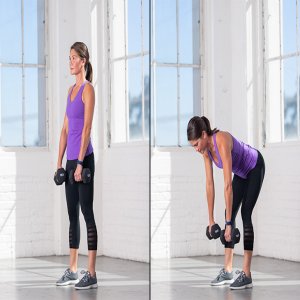
How to do: Find a bench, or stool stable enough to stand on. you can use stairs also.
Grabbing a light dumbbell or kettlebell with both hands, stand at the corner of the box and gently curl forward and down, letting the weight drop. Be sure to keep control as you lower.
Let the weight drop as far as possible, ideally farther than your feet. Hold for 8-10 seconds at the bottom.
Gently curl back up, one vertebra at a time.
Repeat 4-5 times, trying to reach deeper every time.
Standing chest stretch
How to do: Take a standing position facing toward the wall.
Now put your one hand on a wall, the elbow should be extended.
Now take a turn on your hanging hand.
Twist your back without moving your legs.
It gives you a backstretch, hold this turn for 10-15 seconds and release.
Perform this on the opposite side.
Seated spinal stretch
How to do: Sit on a chair and your back is extended.
Your feet touching the floor and your hands hanging by your sides.
Now take a turn on either side by moving your hands.
Turn without moving your legs, they should be touching the floor.
Hold this turn for 10-15 seconds and do it on your opposite side.
Perform 4-5 repetitions on each side.
Bird-Dog pose

How to do: Begin with the hands and knees on the floor, making sure that the shoulders are above the hands, and the hips are above the knees.
Tighten the abdominal muscles and lift one arm straight forward at shoulder level.
Raise and extend the opposite leg straight out from the hip.
Tighten the muscles and hold this position for10-15 seconds.
Return to the beginning position and repeat with the opposite arm and leg.
Perform 4-5 repetitions on each side.
Poodle tail lower back stretch
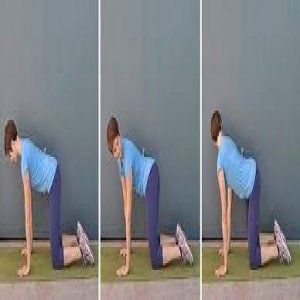
How to do: Start on hands and knees with a flat back.
The shoulders are above the wrists, and the hips are above the knees.
Sway both hips to the left side and move your head to look at your left hip.
Back to center. Sway both hips to the right side and turn your head to look at your right hip.
Continue to alternate sides for 8-10 repetitions.
Open Book Stretch
How to do: Begin by lying on your left side with the knees bent and stacked, and the arms straight from the chest.
Maintain the hips and knees stable as you rotate the upper back, reaching the right arm to the ceiling.
Continue to rotate so that the chest opens and the right arm reaches towards the ground.
Hold for 8-10 seconds before closing the arms to return to the beginning position.
Repeat for 2-4 total repetitions before switching sides.
What are the safety and precautions are required during a back stretch?
- Stretch gently and slowly only to the point of mild tension, not to the spot of pain.
- Hold each stretch for 15- 20 seconds. Don’t bounce!
- Never hold your breath. breathe in deeply before each stretch and breath out during the stretch.
- Stretch the lower back muscle with safety and care. Be gentle and cautious if you have any kind of injury or health problem. It’s good to talk with your doctor first before beginning any new types of exercise.
- You can perform these stretches once or twice a day. But if the pain gets worse, or you feel very sore, take a day off from stretching.
- Be aware of your body’s limits and don’t push your body to perform too much. Listen to your body and perform what feels best for you in every moment.
- As you perform these stretches, take your time and observe your breathing. Use your breath as a lead to make sure you don’t strain or overdo it. You should be able to breathe smoothly and comfortably throughout each pose or stretch.
- These exercises are aimed to relieve not cause lower back pain, so be aware when moving and stop immediately if you feel shooting pains. If you do feel lower back pain when exercising, once you start again, gradually work your way up to the previous motions.

